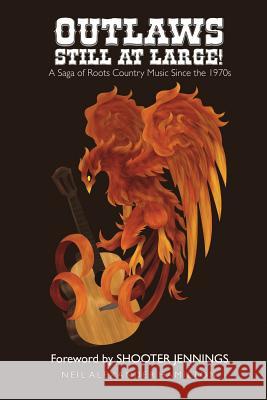Outlaws Still At Large!: A Saga of Roots Country Music Since the 1970s » książka
Outlaws Still At Large!: A Saga of Roots Country Music Since the 1970s
ISBN-13: 9780615764047 / Angielski / Miękka / 2013 / 570 str.
The first-ever book to cover the history of the renegade Outlaw country music movement from its beginnings in the 1970s to its resurgence today, -Outlaws Still At Large - draws from the author's interviews with current artists to reveal a rich, vibrant music scene beneath the mainstream Nashville gloss, while it shows the trials and adventures of life on the road. Hamilton traveled more than 20,000 miles with the Outlaws to get his story, and in the end, the music changed his life. One of the Outlaws, Shooter Jennings, who is the son of 1970s Outlaws Waylon Jennings and Jessi Colter, says about Hamilton and this book: -Besides his insanely neurotic attention to detail, or his relentless obsession with perfection, Neil is someone who cares very deeply for music and art. He cares so deeply that he's willing to spend as much time as he finds necessary to do this right, to do it true, and do justice to the thing he loves and protects with such grace and dignity. He is, like us, a warrior.- Hamilton begins with a historical background to the rise of country music and the Outlaw movement, before offering five chapter profiles on prominent Outlaws from the 1970s: Waylon, Willie Nelson, Billy Joe Shaver, Johnny Paycheck, and David Allan Coe. He then shows how the 1970s Outlaw movement faded, how Nashville pop regained its crown, and how the current Outlaw movement has emerged. From there he presents chapter profiles on 15 current artists, including Shooter, Blackberry Smoke, Elizabeth Cook, Dallas Moore, Jackson Taylor, Jason Boland, Lydia Loveless, Whitey Morgan, Wayne Mills, Joey Allcorn, and Hellbound Glory. The book concludes with a look at the promoters behind the Outlaw scene and the emergence of Outlaw music on SiriusXM radio. Hamilton found that there's really no one Outlaw musical form. Some of the artists are most heavily influenced by Hank Williams, others by Elvis Presley, or by the 1970s Outlaws, or by Southern rock, or even punk rock. Yet, beneath this diversity and creativity, there remains a central attachment to country's roots and to the belief that music should be created primarily for the heart and not the wallet-even if it means many a hungry night in a low-pay honky tonk. If readers bathed in music history get a feeling that Hamilton formatted the book in word similar to the way that Willie Nelson formatted his path breaking album -Red Headed Stanger- in music, they will be right on the mark. That structure is meant to convey the continuing link between country roots past and present and the continuing belief that country music based on sincerity still has something to say in a society awash with shallow forms and fleeting moments.











